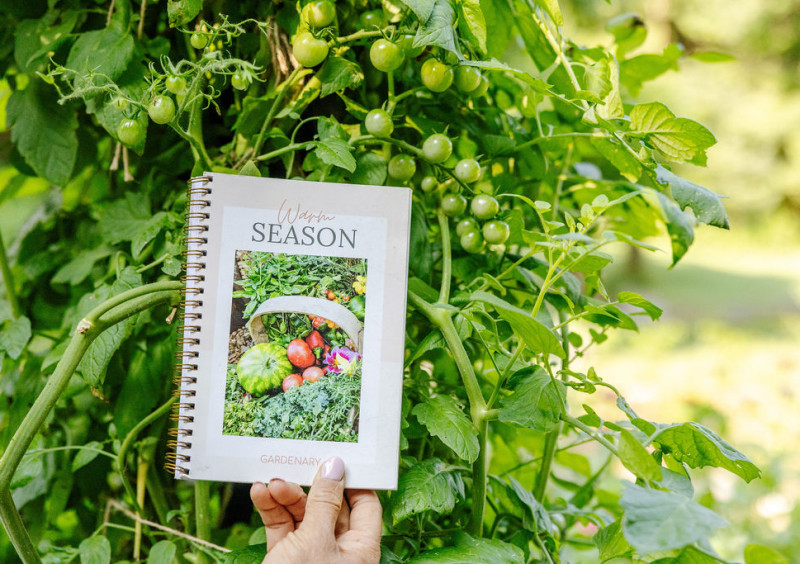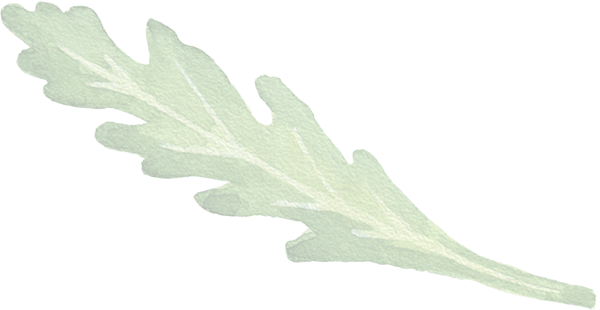Roll Out the Welcome Mat for Ladybugs & Other Pollinators
Ladybugs, also called ladybirds and lady beetles, are such wonderful little bugs. We tend to think of them as cute, but that's because we're not their prey. Ladybugs are actually pretty brutal predators. Each one will feed on thousands of soft-bodied insects like aphids, mealybugs, whiteflies, mites, scale, and thrips in its lifetime. That alone makes them super advantageous to our gardens.
But ladybugs don't just take care of garden pests for us. They also help pollinate our flowers and fruiting plants. They zip around our gardens feeding on nectar and spreading pollen as they go.
This might be why ladybugs are positive symbols in many different cultures. Whether you believe ladybugs are good luck or signs from angels, they're certainly good news for your garden.
So run, don't walk, to roll out the welcome mat for these beneficial insects by planting certain flowers and flowering herbs and by making your garden as pollinator friendly as possible. Let's look at the many wonderful flowers you can plant if you'd like to welcome more ladybugs to your garden.
Flowers to Plant to Attract Ladybugs to Your Garden Space
- alyssum
- calendula
- cilantro
- cosmos
- dill
- fennel
- feverfew
- marigolds
- milkweed
- mint
- nasturtiums
- parsley
- sunflowers
- tansy
- yarrow
Flowers in the Daisy Family Welcome Ladybugs to Your Garden
Calendula, cosmos, marigolds, and sunflowers all come from the same plant family, the Asteraceae, or daisy, family. Why do ladybugs love these flowers in particular?
Well, for one, pollinators tend to be drawn to bright colors like red, orange, and yellow, and these plants have pollen and nectar-rich blooms.
Other than that, it's hard for us to fully appreciate because we literally can't see these flowers the same way that pollinators do. The center of each sunflower, for example, is a kaleidoscope of ultraviolet patterns that beckon insects like ladybugs to the flowers. Their large size means ladybugs can see them from afar, and they have a nice, flat surface that's perfect for landing on.
I love to grow marigolds and calendula in my raised-bed kitchen garden, and then I plant cosmos and sunflowers in my designated pollinator garden space. Explore our guides to growing marigolds and calendula.
Ladybugs Adore Flowering Herbs in the Daisy Family
The daisy family also gives us flowering herbs like feverfew, yarrow, and tansy. The blooms on these plants tend to be small and tight in shades of yellow or white, which ladybugs love. I love to grow feverfew, yarrow, and tansy in my in-ground pollinator garden.
Learn more about growing your own feverfew.
Flowers in the Brassica Family Are Beloved by Pollinators
Pollinators love the dainty yellow flowers that brassicas like mustard greens, kale, and broccoli produce when they go to seed. Sweet alyssum is a flowering plant in this family. You can find blooms in yellow, or course, but also beautiful shades of purple, pink, and white. The shallow, teeny tiny blooms make for easier snacking for ladybugs.
Alyssum is easy to grow from seed and spreads outward instead of growing tall. It's ideal for planting in containers around plants that are prone to aphids or in the corners of your raised beds. It also makes excellent ground cover.
So plant some alyssum, and then if your veggies bolt, consider keeping one in your garden for the pollinators. The bees and ladybugs will certainly thank you.
Herbs in the Carrot Family Are Ladybug Magnets
Nothing brings all the ladybugs to the yard quite like cilantro when it's flowering. I'm not exaggerating when I say the yellow and white blooms of cilantro, dill, fennel, and parsley are ladybug magnets. These herbs are so great at attracting pollinators that some gardeners plant them in warm weather specifically so that they'll bolt and produce flowers. (Parsley is a biennial, so you might have to wait for its second year in the garden to get flowers.)
I love growing these herbs in my kitchen garden, but I also plant them in my pollinator garden just for the bees, butterflies, and ladybugs. Learn more about how to grow cilantro, dill, and parsley.
Milkweed Attracts Ladybugs & Supports Butterflies
Ladybugs and butterflies love the bright shades of milkweed flowers, and the flat leaves give ladybugs a nice little resting spot. If you're going to add milkweed to your yard, make sure to look for a local variety at the nursery so that you can best support your butterflies and moths.
Nasturtiums Bring in Ladybugs & Hummingbirds
The vase-like shape of nasturtium flowers are ideal for hungry hummingbirds to take a sip, but the bright colors also attract lots of ladybugs. Nasturtiums are an all-around great flower to have for organic pest control. Learn how to grow nasturtiums from seed.
Other Ways to Attract Ladybugs
Avoid Using Pesticides
I hate to break it to you, but there's no such thing as a pesticide. There's just an insecticide. Even organic treatments like Neem oil and diatomaceous earth can harm ladybug larvae. Plus, their use has a trickle-down effect in the ecosystem. Pesticides are linked to a dramatic decline in pollinator species, from ladybugs to honeybees.
The best way to make your garden a safe and welcoming haven for pollinators and beneficial insects is to avoid reaching for sprays at the first sign of an issue. Learn five ways to deal with garden pests naturally.
Even if you're not spraying pesticides, you might be using synthetic fertilizers. And believe it or not, those synthetic fertilizers actually alter the taste and smell of all those flowers you've planted for the ladybugs.
Ladybugs thrive in natural, organic environments, so that's exactly what we need to create for them in our gardens.
Give Ladybugs a Place to Overwinter
Ladybugs hibernate during the coldest months of the year. Their ideal spot is a hollow stem or other little nooks and crannies that seem nice and insulated. That's why it's a good idea to minimize your yard cleanup in the fall. Don't cut everything down to soil level. Leave some of the stems and dry flower heads in your garden.
You can also buy an insect hotel to give ladybugs the perfect place to spend the winter or make your own. Hang your insect hotel near some herbs or flowering plants so that ladybugs can find it. You'll want to keep it about 4 feet off the ground, in a sheltered but sunny location.
This ensures you'll have ladybugs in full force as soon as spring arrives.
Order Ladybugs Online
You can actually purchase pest predators like ladybugs and praying mantises online or at local garden centers and bring them into your garden. My husband and I ordered a whole bunch of ladybugs once when our kale was under heavy attack from aphids, and our kids had so much fun watching them.
But buyer beware: We didn't have a single ladybug in our yard by the next day. Actually, after just about 30 minutes, poof! they were gone.
Most ladybugs for sale are harvested from high elevation areas in the western US during their hibernation period. They're boxed up and shipped across the country, where they wake up to find themselves in a different climate without the food they prefer. So they go off to look for what they're used to. That's why buying ladybugs is typically a waste of money.
If you do go this route, make sure to do a bit more reading on the best type of ladybug to buy for your area and how to ensure they stay in your garden.
Gardenary's Warm Season Garden Planner
This beautifully designed planner takes the guesswork out of gardening and helps you stay organized, inspired, and on track during the warmer months.

Keep Some Aphids
Hear me out. When adult ladybugs are deciding where to lay their eggs, they want to pick a spot where their babies are guaranteed to find some food. And what do those babies eat? Aphids. So leave some soft-bodied pests for the aphids to eat.
If you're constantly cleaning up your garden and spraying for pests, ladybugs won't linger in your space because there's not a good source of food for their babies. The best way to attract and keep ladybugs is to consider their complete life cycle.


One More Thing
Make Sure You Know What Ladybug Larvae Look Like
We all go through that super awkward teenage phase, and even ladybugs are no different. A ladybug's life cycle is actually pretty bizarre and involves changing its shape not once but twice. Here's a quick overview: ladybug eggs are off white to orange in color and are laid in neat clusters on the undersides of leaves.
After hatching, they spend about 3 weeks in larva stage, and it's actually during this stage that they're the most ferocious aphid predators. Ladybug larvae are dark gray and spiky with some orange or red spots. They look a bit like tiny black alligators. I heard someone refer to this as the "goth stage." It's pretty hard to look at them and image something so scary looking will eventually turn out cute.
Each larva can eat 400 aphids before it becomes a full-grown ladybug—that's a lot for a baby bug!
Anyways, once the larva eat their fill of aphids and other tiny pests, they'll shed their outer layer and become a pupa. Then they shed again and become the bug we recognize as ladybugs over the next two weeks.
These not-so-attractive guys are good reminders that ladybugs are beetles. Just make sure you don't mistake them for pests!
Time to Show Our Ladybug Friends Some Love!
Give your neighborhood ladybugs some food, a place to raise their young, and cozy spot to spend the winter. Avoid using any weird chemicals. And those ladybugs are not only going to show up for you—they'll bring their friends.
Inviting ladybugs and other beneficial insects into my garden is one of my favorite ways to work with nature, not against it. I take a more holistic approach to pest control, which means creating a space that's home to all kinds of wildlife and diverse plant species, our spotted little friends included.
So the next time life gives you aphids, plant some flowers. Now you'll have flowers and ladybugs to enjoy. Don't stress about the rest.












